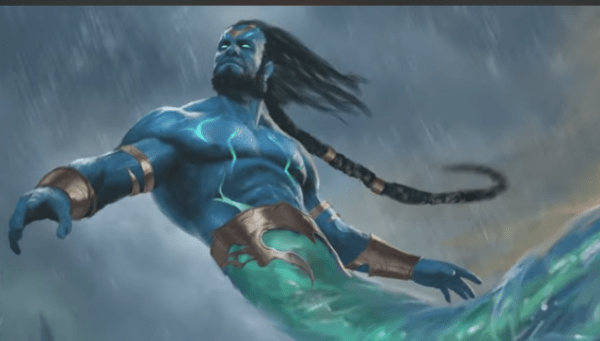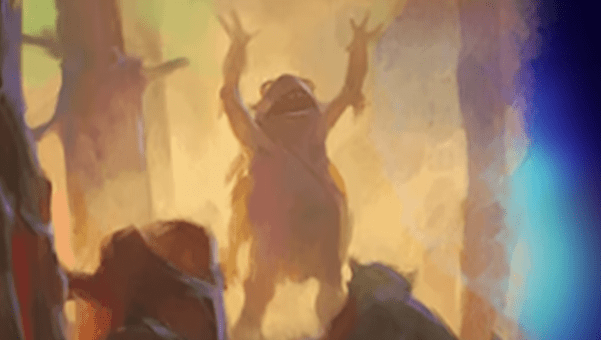The Creatures of the sea are always a group of enemies within DnD that can be quite deadly to those not prepared to face them. Not only is there the risk of drowning in the waters they reside in, but depending on the water-based environment, they could be able to out-maneuver the players in the water or have an advantage over them.
Out of many of them, though, the subject of this article could be one that many who sail the open seas could consider an incredibly dangerous monster to battle; The Giant Octopus.
What is the Giant Octopus: attributes and description
Attributes
- Challenge Rating: 1 (200 XP)
- Armor Class: 11
- Average Hit Points: 52 (8d10+8)
- Movement Speed: 10 ft., Swim Speed 60 ft.
- Skills: Perception +4, Stealth +5
- Senses: Darkvision 60 ft., Passive Perception 14
- Languages: N/A
- Proficiency Bonus: +2
Giant Octopus 5e description
Traits
- Hold Breath: While out of water, the Octopus can hold its breath for 1 hour.
- Underwater Camouflage: The Octopus has advantage on Dexterity (Stealth) checks made while Underwater.
- Water Breathing: The Octopus can breathe only Underwater.
ACTIONS
Tentacles: Melee Weapon Attack: +5 to hit, reach 15 ft., one target. Hit: 10 (2d6 + 3) bludgeoning damage. If the target is a creature, it is Grappled (escape DC 16). Until this grapple ends, the target is Restrained, and the Octopus can’t use its Tentacles on another target.
Ink Cloud (Recharges after a Short or Long Rest): A 20-foot-radius cloud of ink extends all around the Octopus if it is Underwater. The area is heavily obscured for 1 minute, although a significant current can disperse the ink. After releasing the ink, the Octopus can use the Dash Action as a bonus Action.

Advantages and drawbacks of Giant Octopus for DMs
Advantages
1. High capability for Stealth
In the real world, the Octopus is a very good natural stealth artist, the Giant Octopus in Dungeons and Dragons is no different. The creature has a +5 to Stealth checks, giving it a natural boost to its own ability for when it needs to make stealth checks to hide from anything that might wish to attack it, such as players or other predators in the water.
It also has the Natural Camouflage feature, giving it an advantage on any stealth checks it makes while underwater, making it even harder for a player to see it.
This is the perfect setup for the Octopus to be able to launch a stealth attack against a hostile creature or to be able to hide from the party should it wish to flee.
2. Capable of Grappling a Target
The primary weapon of the Giant Octopus is its tentacles, the only appendages it has on its body. Using these tentacles, the Giant Octopus can grapple a target while it is fighting them, so long as the attack made by the Octopus hits them. If it does, the attack target cannot move away from the Octopus, and any attacks against the grappled creature are rolled with an advantage.
This is especially useful in combat encounters with multiple enemies, where having one of the party members grappled could help the enemy group when it comes to determining what PCs should be focused on during the fighting. Unfortunately, getting them out of the grapple is also rather difficult, with a DC 16 to the roll and a disadvantage added to both their Dexterity saving throws and the grappled creatures’ attack rolls.
The Octopus could lose the grapple if they are knocked back and away from the target, say with the thunder-wave spell, but it could still grapple the target on its next attack against them.
3. Obvious capabilities of an Octopus
Several things are a part of the Giant Octopus’ stat block and capabilities that would otherwise be quite obvious for such a creature to have:
- The creature’s Swim Speed is 60 ft., making it incredibly agile while in the water. This can aid the Octopus in catching up to enemies within the body of water it is in trying to escape.
- The Giant Octopus can breathe underwater, which would be incredibly obvious for any water-based creature to have within DnD.
- The Giant Octopus can create a large cloud of ink within the water that extends to a 20ft radius in the water.
After creating the cloud, the Octopus can use a bonus action to use the dash action, giving it a chance to escape from an area of combat if they are being engaged with an enemy that is too much for them to be able to handle.

Disadvantages
1. Incredibly slow movement speed on land, for what little time they can spend there
As expected from a creature mainly meant to reside within the confines of the water, there are limitations to what it can do. For a start, the Giant Octopus only has a movement speed of 10 ft. on land, making it incredibly easy for a target that it is trying to attack to move out of its range and make it more difficult for the Octopus to able to attack them.
In addition, their modifier to hit an enemy isn’t restricted when on land, nor is the bonus of being able to grapple any successfully hit target, but it is also unable to utilize its ink cloud ability. Finally, the Giant Octopus can only hold its breath outside of the water for a single hour, restricting how long it can stay on the surface in any given situation.
This could be exploited by a party that wants to kill the Octopus through suffocation by preventing it from making it back to the water, either by freezing the water it came from or by pinning it back through various means to simply stop from getting to it.
Best uses for Giant Octopus 5e in a Campaign
A mini-boss in the open seas
Although this use could require some Homebrewing for larger levels, the Giant Octopus can still be used in this way for a lower-level party. For example, if the party is currently out on the open seas, then a Giant Octopus could begin attacking the ship to sink it and bring the vessel and everyone aboard down to the ocean’s dark depths.
Although the Giant Octopus doesn’t have the Siege Monster feature, it could still be a decent fight for the party to face up against, especially if they are at a low enough level to where a Challenge Rating 3 monster on its own could cause serious problems for them.
An extra monster in a nearby body of water
Suppose a Dungeon Master needs to find a creature that could help in a combat encounter that could cause trouble for the party. In that case, the DM could orchestrate the party to end up in a part of a dungeon with a body of water nearby with the Giant Octopus within it.
Since the advantage on attack rolls gained from a player character being grappled by the Octopus’ tentacles can be utilized by any creature, the Octopus could be used as a means of dealing extra blows to the party, especially if the other creatures that the party is facing tend to miss their attacks more often than they manage to hit them.
An introduction to Status Effects
On the same note as the previous use, if the party facing the Giant Octopus is relatively new to Dungeons and Dragons. Then the Octopus could be a good way to introduce them to the various status effects a player could be subject to or subject enemies to themselves.
Unlike the first use described in this article, the Giant Octopus does not need to be modified in any way for this to work. The experience gained would be coming from the tentacle attack itself rather than something the Octopus has that can be modified to make it more difficult.
If a Dungeon master is considering modifying the Giant Octopus for this usage, it would be recommended to weaken the creature by making its damage roll a lower die. This gives the creature fewer hit points to work with and/or removes its extra skill modifiers to make the battle easier for the players.

Advice and final thoughts
The Giant Octopus can be used in several different ways outside what was described above in the previous section. However, the Giant Octopus is a monster that should be used uncommonly.
After all, like many other beasts meant to reside in the water, their usefulness mainly balances around if there is a body of water deep enough to sustain the creature. So, while I agree that this creature can be used for various purposes, it is best left to certain areas or campaigns that focus more on sea travel or water-based areas.
Giant Octopus 5e FAQ
Is there any specific way to make its attack stronger?
If a Dungeon Master chose to, they could take the single attack that the Tentacles Melee attack can do and extend it to eight targets that can be attacked by this rather than the single one as the normal one is limited to. Then, of course, there is also simply raising the attack’s damage dice to a higher number of dice or a higher number of sides on the dice.
Can the Giant Octopus climb like Octopi can in real life?
Unfortunately, despite Octopi’s capabilities in the real world, the Giant Octopus cannot climb in published media. However, this doesn’t stop the Dungeon Master from tweaking the stat block to allow it to do so
How much does a Giant Octopus weigh?
Although this is not useful information within a campaign, a Giant Octopus’ weight is solely determined by whatever the Dungeon master decides should be its weight. This is mainly because there is no set weight of the creature within published media, as it doesn’t hold any true bearing on its abilities within or outside of combat encounters.
